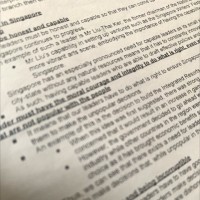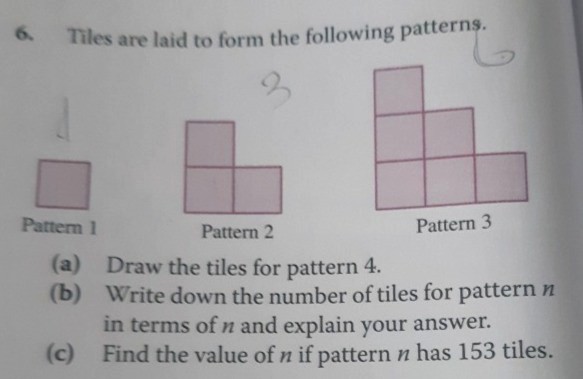Ask Singapore Homework?
Upload a photo of a Singapore homework and someone will email you the solution for free.

Question
secondary 3 | E Maths
One Answer Below
Anyone can contribute an answer, even non-tutors.

Help
⬜
⬜⬜
⬜⬜⬜
⬜⬜⬜⬜
The number of tiles in the last row (bottom most) is always the same as the pattern number.
The first row always has 1 tile.
Each row always has more tile than the previous row. Or, the next row always has 1 more tile than any given row.
This means that the difference in the number of tiles for any two consecutive rows is always 1.
So number of tiles for pattern n
= 1 + 2 + 3 + 4 + ... + (n-2) + (n-1) + n
1 + n = n + 1
2 + (n -1) = n + 1
3 + (n - 2) = n + 1
...
...
If we pair the rows up like this , whereby the first row goes with the last, 2nd row goes with the 2nd last, 3rd row with the 3rd last, and work towards the middle,
We end up having many pairs, each with the same value of (n + 1)
Number of pairs we have = ½n
(Basically half the total number. Eg. If n = 100, you can have 50 pairs)
sum of all the numbers
= Number of pairs x value in each pair
= ½n(n+1)
½n(n+1) = 153
n(n+1) = 306
n² + n = 306
n² + n - 306 = 0
Factorise,
(n - 17)(n + 18) = 0
n - 17 = 0 or n + 18 = 0
n = 17 or n = -18 (rejected as n has to be positive integer, and n ≥ 1)
so n = 17
See 1 Answer



